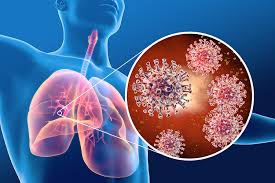Roorkee, India – Scientists at the Indian Institute of Technology (IIT) Roorkee have made a groundbreaking discovery in the fight against multidrug-resistant bacteria. Their research has uncovered a crucial regulatory mechanism in Acinetobacter baumannii, a highly drug-resistant superbug responsible for severe hospital-acquired infections.
The study, published in the prestigious journal mBio, provides new insights into how A. baumannii controls its attack and defense systems. This discovery holds promise for developing novel treatment strategies to combat this persistent pathogen, which poses a significant threat in healthcare settings due to its ability to resist multiple antibiotics.
Unveiling the Superbug’s Defense Strategy
The IIT Roorkee research team, led by Prof. Ranjana Pathania, found that A. baumannii employs a bacterial “weapon” known as the Type 6 Secretion System (T6SS) to attack competing microbes. However, the precise mechanism by which the pathogen maintains antibiotic resistance had remained elusive—until now.
The scientists discovered that the superbug switches T6SS on or off depending on environmental conditions. A key player in this regulation is a small RNA molecule called AbsR28, which is influenced by manganese levels. When manganese levels are high, AbsR28 binds to an essential gene (tssM) responsible for T6SS function, leading to its degradation and preventing the activation of T6SS.
Additionally, increased manganese levels allow A. baumannii to retain the plasmid pAB3, which carries multiple antibiotic-resistance genes. This regulatory system enables the bacteria to adapt and evade both antibiotic treatments and the host immune system.
Implications for Future Treatments
Prof. Pathania explained that activating T6SS makes A. baumannii more vulnerable to antibiotics and oxidative stress, forcing the bacteria to carefully regulate its defense system. “Our discovery sheds light on how this pathogen adapts during infections, helping it evade both antibiotics and the immune system,” she stated.
The research suggests that targeting AbsR28 could disrupt the superbug’s regulatory system, rendering it more susceptible to antibiotics without directly attacking resistance genes. This breakthrough opens new possibilities for precision medicine and the development of novel drugs to combat multidrug-resistant infections.
Conclusion
With antibiotic resistance posing a growing global health challenge, the IIT Roorkee team’s findings offer a promising direction for future treatments. By exploiting the newly discovered mechanism, researchers and pharmaceutical developers may be able to design more effective therapies against A. baumannii and other resistant pathogens.
Disclaimer
This article is based on research findings published in mBio. While the discovery presents new possibilities for treatment, further studies and clinical trials are necessary to translate these findings into viable medical applications.










